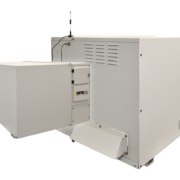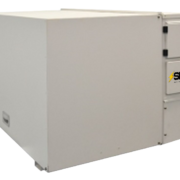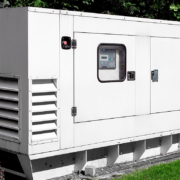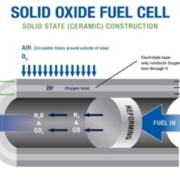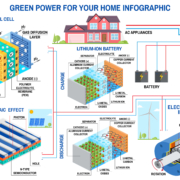Current and Future Solid Oxide Fuel Cell Applications
Solid oxide fuel cells (SOFCs) is one of the most promising technologies for clean, high-efficiency energy production. Because of their unique attributes and scalable capabilities they are being used for a number of applications and solutions.
SOFC technology is so promising that the US department of energy initiated a program in 2000 to invest in the further development of the technology. Here at Special Power Sources, we’ve earned grants through the Small Business Innovation Research (SBIR) for the purpose of researching the capabilities of SOFC technology for specific applications.
As the technology further advances more and more people will see the benefits of it. One of our aims is to show the potential for solid oxide fuel cell technology through its various applications. That is what we want to do today.
Overview of SOFC Benefits
To understand why solid oxide fuel cells have been growing in their use cases and why so much emphasis is being placed on their potential for future applications, one must first understand the benefits this technology brings.
Here is an overview of the benefits of SOFCs.
- Reliable
- Efficient
- Fuel Flexible
- Sustainable
- Clean energy
Because of their unique features, we have the potential to meet many energy needs.
With recent innovations, we are beginning to see many of the advantages of using SOFC vs other energy sources and how they are opening the door for many future possibilities in energy production.
Current Solid Oxide Fuell Cell Applications
Solid oxide fuel cell technology is not new, but it has been seeing major recent innovations. These innovations are allowing SOFCs to be used in solving many power generation challenges.
As a solid oxide fuel cell company, we are able to witness firsthand, the exciting future of this technology as we take on more and more unique projects. But for the general knowledge of those interested, we want to provide a glimpse into the various applications in which the SOFC are and will be used for.
Off the grid remote Power Generation
Many remote locations and communities lack access to a reliable power grid which makes providing consistent energy a challenge. Traditional solutions either utilize power sources that are inefficient, utilize expensive fuel, or require consistent maintenance.
Solid Oxide Fuel Cells on the other hand, can provide reliable and consistent energy more efficiently and with less maintenance. With the help of SOFCs, we at SPS have been able to create power solutions for the most rugged and remote locations.
Because of its efficiency at low temperatures, its capacity to store power and its fuel flexibility, it is a perfect source for low maintenance and consistent power needed for off the grid communities or other remote locations such as an offshore oil rig.
Power generation in harsh and low-temperature environments
Much like remote areas, those with harsh conditions and extremely low temperatures struggle to generate consistent and reliable power. Most power sources will lose efficiency and effectiveness in extreme conditions.
Solid oxide fuel cells however maintain higher efficiencies than other power sources long term in extremely cold conditions. We have even published tests showing how SOFC maintains efficiency in colder temperatures.
Military use
When it comes to military applications, power generation needs to be consistent, reliable and trustworthy. Situations and timeframes can be unpredictable and the military needs a power source that not only will provide consistent energy but will maintain the stored power.
Traditionally, much of the military’s operational power needs were met by fuel usage and battery technology. While batteries are well suited for short-term (hourly or daily) energy storage, they are less suited for longer-term (seasonal) electrical energy storage due to self-discharge challenges and economic constraints.
Fuel cell technology can help meet the power generation demands of the military with its improved capacity of energy storage and its efficiency in various extreme environments. Given its fuel flexible functionality, it can also be used as a hybrid or cogeneration system to provide reliable and cost-effective power generation by utilizing the resources available.
Aeronautics
There are many unique power challenges currently in the aeronautics field. Commercial aviation is looking to provide greener air travel while others are looking to make hypersonic travel more accessible for emergency circumstances by creating a reliable source of onboard power generation.
Providing greener aviation power is challenging due to the propulsion and power needs of a flight.
Electric power production onboard hypersonic vehicles is challenging due to high heating loads at speeds > Mach 5 and the inability to produce electrical power via generator driven by the propulsion system.
Solid oxide fuel cell technology is being adapted in a number of ways to meet these challenging demands.
One of the applications for commercial aviation is utilizing SOFCs for the onboard power requirements of the vehicle. This would allow for a reduction in engine size which would also lead to a great reduction in overall fuel consumption. (you can explore one case study here)
Another innovation being explored is the use of SOFC to create an onboard power system that can withstand the demands of a hypersonic vehicle while providing power for advanced electronics.
Space Missions
The energy demands and challenges of space missions are quite unique. Any energy source must be reliable, within stand various stresses, maintain consistent output under extreme conditions and provide flexible energy for various needs.
In recent years, NASA and the Department of Energy have looked to the private industry for innovative solid oxide fuel cell technology that would provide ultrafast and efficient propellants production and power generation during space missions.
With the use of a tubular architecture that tends to be more robust, high-performing, and contaminant tolerant, NASA is hoping to find a source of power generation that is more appropriate for missions than the technology that is currently available. This not only provides a more efficient source of propellant and energy but will allow NASA to further invest in space missions.
Alternative energy source to decrease reliance on fossil fuels
By finding alternative energy sources we are able to replace or supplement energy usage and reduce carbon emissions. Most of the talk is around solar or wind energy but solid oxide fuel cells can play a very important role as well.
When it comes to solar and wind based power generation, reliable low-cost, grid-scale, and high-efficiency electrical energy storage is needed to accommodate the rapid growth.
With its efficient energy storage capabilities, flexibility and scalability, SOFCs are a perfect companion to making renewable energy sources more efficient sources of power generation.
SOFCs are also becoming an important prospect in providing greener energy sources in oil and gas operations, aerospace technologies and other areas heavily dependent on large amounts of fossil fuels.
Future innovations with Solid Oxide Fuel Cell Technology
Every project brings us one step closer to unlocking more innovations and applications of solid oxide fuel cells.
Special Power Sources has a Research & Development (R&D) Group that is dedicated to developing new programs that expand the use of our existing products or that require enhancements of existing features or functionality. One example is the development of a power generation system that operates on alternative fuels such as ultra-low sulfur diesel, biodiesel or military logistics fuel (JP-8).
The Special Power Sources R&D Group also performs research into developing new, innovative energy technologies with the goal of commercializing the technology into use by the broader market. Many of these programs and research projects are joint development efforts funded in part by government, military and private industry organizations.
Here are some of the recent projects we have worked on through the US SBA Awards
- Low temperature P-SOFC 300W Power Source for Military Missions (view project)
- Tubular, proton-conducting, ceramic reversible fuel cell for high-performance energy storage to accommodate wind and solar electricity generation (view project)
- Robust, high-performance, contaminants-tolerant, reversible protonic ceramic electrochemical cells for producing Lunar and Martian propellant and generating power to support space missions (view project)
- Hypersonic Onboard Power and Thermal Management System for hypersonic vehicles (view project)
As we take on more projects and innovate SOFC technology, the possibilities and applications for SOFCs will continue to grow.
If you have unique power generation needs or are interested in the use of solid oxide fuel cell technology then you can contact us for more information.


